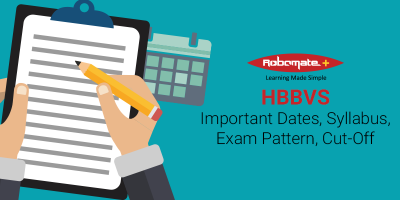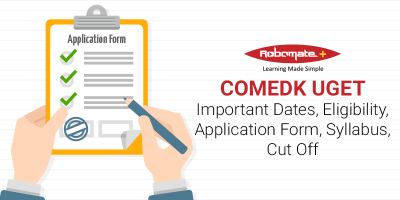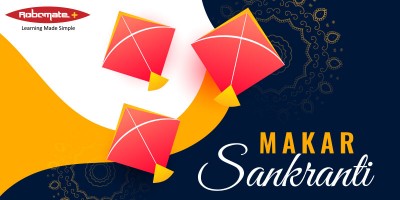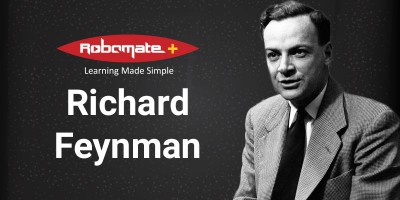State Board Commerce (XI-XII) - Test Papers
HBBVS – Important Dates, Syllabus, Exam Pattern, Cut-Off
About HBBVS
With an aim of luring the students to the field of science, Dr. Homi Bhabha Balvidnyanik Spardha( HBBVS)is held every year for the students of 6th and 9th standard. The exam is conducted by the Mumbai Science Teachers Association and encourages the students towards the field of science.
In this world of science and technology no one is unaware of the fact that science is changing our lives, and due to this change, various career options are also emerging in this field. Science has changed the world altogether in a different way, and the world of science needs the people with talent to take this field to new heights, and the students also should be made aware about this fascinating world of science and technology. HBBVS is also a way to get the students aware of this field, this talent based examination selects the talented students and provide them with a number of opportunities and grant them a better future ahead.
Syllabus for HBBVS
The syllabus is mainly the science subject and some general knowledge about science, the syllabus mainly depends on the class in which the aspirant is studying. The student preparing for this examination has to prepare all the topics included in their CBSE or ICSE textbooks. SSC curricula are followed for the classes 5th and 6th. The topics for each class are mentioned below;
Class 5:-
Living Things, Plant Life, Animal Life, Interdependence in Nature, Bones and Muscles, The Nervous System, Food and Health, Safety and First Aid, Rocks and Minerals, Soil Erosion and Conservation, Air, Water and Weather, The Moon, Simple Machines, The Environment, and Natural Calamities.
Class 6:-
Our Food, Playing With Magnets, Rain: Where does it come from, What Do Animals Eat, Materials and Things, Habitat, Separation of Substances, Fibre to Fabric, Plants: Parts and Functions, Changes around us, Water in Our Life, Simple Electric Circuits, Learning How to Measure, Movements in Animals, Lights, Shadow and Images, and Living and Non-living
Class 7:-
Food Components, Acids and Bases, Animal Fibre, Motion and Time, Temperature and its Measurement, Weather, Climate and Adaptation of Animals to Climate, Electricity, Air, Wind and Cyclones, Reflection of Light, Nutrition in Plants, Respiration in Organisms, Reproduction in Plants, Seed Dispersal, Water, Soil: Our Life, Forest: Our Life, and Changes around Us
Class 8:-
Force, Friction, Some Natural Phenomena, Stars and the Solar System, Synthetics Fibres and Plastics, Metals and Non-Metals, Coal and Petroleum, Combustion, Fuels and Flames, Electrical Conductivity of Liquids, What is Science, Cell – The Basic Unit of Life, Story of Micro-Organisms (part 1 and 2), Reproduction in Animals, Reaching the Age of Adolescence, Biodiversity and its Conservation, Different Ecosystems, Food Production from Plants Methods of Management, Production and Management of Food from Animals, Not For Drink, Not For Health, and Why do we fall ill?
Class 9:-
Motion, Laws of Motion, Gravitation, Work and Energy, Sound, Matter around us, Is Matter Pure?, Atoms and Molecules, What is inside the Atom?, Floating Bodies, Plant Tissues, Animal Tissues, Movement of Materials across a Cell Membrane, Diversity in Living Organisms, Sense Organs, Animal Behaviour, Challenges in Improving Agriculture Products, Adaptations, Soil Protection and Bio Geo Chemicals
Exam Pattern for HBBVS
The exam will be conducted in 3 phases
Phase 1- written test: The students of the 6th standard have to prepare the syllabus of class 5 and 6 for the exam and the students of the 9th standard have to prepare the syllabus of class 7, 8 and 9. The questions are objective type (MCQs). The examination is based on written mode and the duration of the examination is 90 minutes (1.5 hours). The number of questions is 100 and 1 mark is awarded for every correct answer and there is no negative marking.
Phase II-Practical competition: It include 5 experiments and 6 marks are awarded for each correct experiment, it also does not have a negative marking system.
Phase III: The last phase is the interview phase along with the Evaluation of action research project and the students that pass this phase are selected.
How to Apply For HBBVS
The students of 6th standard or 9th standard can apply for the examination.
The registration is done in two steps; school registration and student registration. Registration can be done by visiting www.msta.in and complete the registration for the school and after obtaining the id and password one can visit his profile and complete all the formalities like ‘Adding Fees’. The registrations can be an individual student or bulk student registrations and accordingly click on ‘Add student’ or ‘Upload Student’. After completing all the steps one can take a printout and keep for reference. The fees include rupees 210 per student, depending on the group. The money can be deposited from any SBI branch.
Important Dates:
Practical Competition Result: II week of January 2019
Interview and evaluation of research report: 17th Feb. 2019 Social Service League high School, Parel
Prize Distribution: 3rd March 2019 Yashwant Natyamandir, Matunga
Online Entry forms for 2019-2020: expected to be released in July 2019
Results and Cut-Off
7.5% of the students are selected based on performance in Phase I and are promoted to appear for the practical test. The meritorious 10% of the candidates from Phase II are selected for the last phase.
Among the selected candidates, the prizes are categorized into three
- top 10% candidates: gold medal, certificate and a scholarship of Rs. 1000/-,
- 40% students: Silver Medal, certificate and scholarship of 500/- and
- the last 40% candidates: Bronze Medal, certificate and scholarship of 300/-
How to Prepare For HBBVS
To crack the examination of HBBVS the students should keep in mind that the questions will be asked from the SSC syllabus and the general knowledge questions will be from the latest news and latest trends in the scientific world. Practical questions are given more importance over the other questions.
COMEDK UGET – Important Dates, Eligibility, Application Form, Syllabus, Cut Off
The consortium of Medical, Engineering and Dental Colleges of Karnataka (COMEDK) is a state level entrance exam for students seeking admission into undergraduate programs in the State of Karnataka. This year COMEDK and Karnataka Unaided Private Engineering College Association (KUPECA) have joined hands to conduct COMEDK. The candidates can seek admission into 190 engineering colleges, 20,000 seats as per the score in the COMEDK UGET 2019. The test will be conducted once in a year. The application has to be submitted by online mode. The students can appear for a mock test for self-assessment. After the entrance test, the key will be released for students to estimate their marks.
Important Dates for COMEDK UGET 2019:
Start of registration: Jan 2019- Second week
Mock test: February 2019- First Week
Last date for submission of application and payment of fees: April 2019- Second week
The issue of hall ticket: May 2019- First week
Date of examination: May 12, 2019
Availability of answer key: May 2019-third week
The announcement of results: May 2019, last week
Counseling for admission: July 2019- second week
Eligibility Criteria for COMEDK UGET 2019
The eligibility criterion for COMEDK UGET 2019 for applying B.Tech and B. Arch degree programmes is different. Here are the eligibility criteria for the individual courses
Engineering courses:
- The candidates must have passed or appearing for class XII or equivalent examination which is recognized by the State or Central Government.
- The candidates must have Physics, Chemistry, and Mathematics as the main subjects. The candidate should also have the English language as the compulsory subject.
- The candidates should score a minimum of 45% marks in subjects of Physics, Chemistry, and Mathematics. The SC/ST/OBC candidates have marks relaxation from 45% to 40 %.
Note: The candidates holding diploma will not be eligible to appear for COMEDK UGET as there is a provision of lateral entry in the degree programme.
Architecture Courses:
- The candidate should have passed or appeared of class XII, second PUC or equivalent degree as recognized by the board. Diploma candidates (Class X + 3 years diploma) are also eligible to appear for the COMEDK UGET. The diploma should be recognized by the State or Central Government.
- Maths is a mandatory subject for the students to appear for the COMEDK UGET
- The candidates should score a minimum of 50% marks in class XII, second PUC or diploma. SC/ST/OBC candidates of Karnataka has marks relaxation of 45% from 50%.
- The candidates should have qualified architecture aptitude test (NATA or JEE Main 2019 Paper-II or equivalent) in 2019
There will not be an entrance test for candidates seeking admission in B. Arch. The candidates have to apply separately as per notification from COMEDK.
Registration and Application for COMEDK UGET 2019:
The candidates need to first register on the COMEDK UGET website. The candidates have to keep a valid email ID and mobile number handy for registration.
Registration step would require entering the name and date of birth as per class X certificate, email ID and mobile number. After successful registration, a valid username and password will be generated. These login details are emailed on the registered email address and mobile number.
Log in using the above credentials, the application form will require filling personal details, academic details, and contact details. Keeps all the academic documents, aadhar card and address proof in hand for easy and correct filling of detail.
The application form will also require uploading a recent photograph (less than 80kb in JPEG or JPG format), the signature of students and parents separately and valid ID proof (35 x 80 mm dimension and of size less than 80kb in JPEG or JPG format).
The candidates have the option of selecting test centers as per convenience. After submission of application, the payment can be made by online mode through net banking, debit card or credit card.
The cost of the application fee for COMEDK UGET application is Rs. 1300 + 18% GST + the convenience charges. The cost of the application fee for Uni-GAUGE application is Rs. 1600 + 18% GST + the convenience charges. In case the candidates are applying for both COMEDK UGET and Uni-GAUGE, the cost of application is Rs. 2100 + 18% GST + the convenience charges.
After successful submission of application, the acknowledgment will be sent on the registered email address. Keep this acknowledgment for ready reference until the exam.
Syllabus COMEDK UGET 2019:
The candidates have to be thorough in subjects of Physics, Chemistry, and Mathematics. The main topics to be covered are
Mathematics: Differential Calculus, Matrices and Determinants, Probability, Integral Calculus, Vector Algebra, Three Dimensional Geometry, Differential Equations and Circles
Physics: Thermal and Chemical Effects of Currents, Oscillations, Electrostatics, Motion in One Dimension, Motion in Two and Three Dimension and Heat and Thermodynamics
Chemistry: Nuclear Chemistry, Biomolecules, Polymers, Environmental Chemistry, Chemistry in Action, Coordination Chemistry, and Chemical Reactions and Chemical Kinetics
Result:
COMEDK is responsible for releasing the results and also key to the question paper. Students can estimate their rank and plan for the admission in the prospective colleges.
Cut Off:
The cut-off marks for the exam will be released by the concerned authority. The candidates who have secured marks more than the cut-off marks will be on the safer side to secure an admission. The cut-off marks for seeking admission into each of the affiliated institutes will be different. The cutoff marks will depend upon the difficulty level of the test number of candidates appearing and qualified for the test, number of seats available in each stream. COMEDK will release opening and closing ranks or admission into the affiliated colleges. The candidate who was ranked 1st last year had scored 168 marks.
| COMEDK UGET Marks | Expected Rank |
| 1-10 | 160 – 180 |
| 10-150 | 140 – 160 |
| 150-3400 | 130 – 100 |
| 3400-9500 | 100-80 |
Makar Sankranthi – The festival of Harvest and Kites
Makar Sankranthi is celebrated across the globe by Hindus. The word Sankranti refers to transmigration of the sun from one constellation (Rashi) to another. Sankranthi is celebrated on the transition of the sun into the zodiac sign of Maka (Capricorn). There are 12 Rashis across the year. Sankranthi falls mostly on the same day of the calendar year on 14th or 15 January. In the southern part of India Makar Sankranti is celebrated whereas, in the northern part of India, Lohri is celebrated. It is a festival of harvest and farmers celebrate it with great zeal. They offer sweets to the fire God.
The festival is celebrated to honor The Sun God, which is a symbol of knowledge, light, and wisdom. The festival is celebrated to remove darkness and enlighten the life with purity and wisdom.
For children, the festival is known for sesame sweets and kite flying. The day is considered as the onset of the spring season. The farmers harvest their crops. This will be the end of winter season and the day starts to get bigger and nights shorter.
The significance of flying kite: India is a host of colorful events introducing the traditional heritage to youngsters and keeping the traditions alive. Flying kites boosts the people to aim high and fly higher to achieve dreams. Flying kite is considered as auspicious on this occasion. Families organize kite flying in grounds or rooftops. The weather is good with bright sun where the sun is transmigrating to a new Rashi. There will be special markets for kites and its accessories. Kites of all color, sizes, and shapes will be available in the market. Kite flying competition is organized by many communities, the winner will be awarded. The bright high flying kites in the clear blue sky make it an exciting experience. The warmth of the sun after the winter season is pleasant and appealing. People get up early in the morning to fly kites and the celebration continues until dusk. The early sunrays provide Vitamin D and are good for immunity and in the maintenance of healthy skin and bones. The sunrays are believed to have beneficial effects on diseases and it also helps in curing dry skin.
It is believed that Gods will awaken after winter season has come to an end and they will send their blessings. People fly the kites higher thinking it will reach to Gods in heaven and they send blessings. The kites are flown as a sign of joy and happiness.
The significance of Sesame Seeds: Traditionally people make sweets of sesame seeds and jaggery. It is assumed that the tradition of making sesame seeds have been adopted from the Maharashtrian culture which goes by the saying “eat sweet sesame and jaggery sweets and speak sweet words”. People share these sweets with relatives, friends, and neighbors which helps in removing hatred and increases love and affection towards each other.
The day is considered as auspicious for making donations, charity and to perform puja. People wear yellow colored clothes and make Urad Dal khichdi as bhog. Yellow color represents the color of the Sun, who is prayed during this festival. The houses are decorated with flowers and rangoli.
Enjoy the festival of kites and assure your safety as well!
Happy Makar Sankranti!
Richard Feynman and How to Remember What You Study
“Richard Phillips Feynman” was a theoretical physicist from America who was and is known for his important and everlasting work in quantum mechanics, quantum electrodynamics and the super-fluidity of super-cooled liquid helium. His model of proton is also a contribution to particle physics. He is also known for the famous Feynman Technique that helps in remembering what you study.
About the life of Richard Phillips Feynman:
Early Life of Richard Feynman
Richard Feynman was born on 11 May 1918 in Queens New York, to Melville Feynman and Lucille Phillips. His father was a Jew and he had moved to Unites States before the birth of Richard Feynman. On the other hand Richard’s mother was a polish emigrant and married to Melville in 1917, and after a year they both were gifted by God with a baby namely Richard Phillips Feynman. After a few years his parents were again gifted with another boy but soon the happiness turned into grief as the infant died at the age of five weeks only. Thankfully the family soon overcame the turmoil and Richard started his school where he enjoyed the subject of Math and it was foreseen that he would do good in this subject.
Schooling and Professional Life in Brief
After finishing his school he applied for many universities, but got rejected due to his being a Jew. But after a struggle he got admitted in MIT in 1935 and completed his B.Sc. in 1939. During the years of MIT, Richard had developed interest in physics, although there was no option for quantum mechanics which the Richard was very keen to explore. Richard studied Dirac and he became the first scientist whom the Richard admired the most. With the help of John Slater, Richard was accepted by Princeton for his Ph.D. and Richard completed his Ph.D. before the Second World War. And soon after this he started his work on the Atom Bomb in Princeton. But while Richard was enjoying his professional life and studies, his personal life was a bit hectic for him as his girlfriend Arlene Greenbaum, was suffering from tuberculosis. Despite the opposing of his family Richard married Arlene and shortly after their marriage Richard was appointed as head of theoretical division of Los Alamos site. In 1945 he was also appointed as theoretical professor at Cornell University. After the death of his first wife he remarried two times in his lifetime. He himself died on 15 February 1998 in Los Angeles, California at the age of 69. His resting place is at Mountain View Cemetery and Mausoleum, Altadena, California.
Qualification and works of Richard Phillips Feynman:
Richard Feynman completed his B.Sc. from MIT in 1939 and soon felt that he must go for Ph.D. He completed his Ph.D. from Princeton before America entered the Second World War and after the completion of his Ph.D. he started working on the Atom Bomb. Although physics was not primary for Richard in MIT but his keen interest and enthusiasm for physics and math mainly quantum mechanics led him to devote his life to it. His main field is ‘Theoretical Physics’ and he did excellently well in it. His thesis are “The Principle of Least Action in Quantum Mechanics”.
Richard Feynman is known for his work in:
Manhattan Project, Acoustic Wave Equation, Bethe-Feynman Formula, Feynman Checkerboard, Feynman Diagrams, Feynman Gauge, Feynman-Kac Formula, Feynman Point, Feynman Slash Notation, V-A Theory, Vortex Ring Model, The Feynman Lectures on Physics, and much more.
Feynman Technique:
Feynman Technique also known as Feynman’s Notebook Technique is a mental model that was introduced by the great physicist Richard Phillips Feynman. He is also termed as the “Great Explainer” because of his ability to make anyone understand any complex topic virtually and in simple terms, that is what made him different from others. He once opened a new notebook and wrote on it The Notebook of Things I Don’t Know About’, and started disassembling all the branches of his knowledge and assembled them back in simple terms to make it easy to understand.
All the four steps of Feynman Technique are mentioned below:
1:- Note down all the information that you have about a topic on a notebook, and add something to it every time you come to know about it.
2:- Make sure that what you have written is easy and simple enough for you to explain it in simple terms.
3:- Perfect the topic that means you should have complete knowledge about your topic and make sure that you don’t have any gaps in your knowledge.
4:- Last but not the least, repeat the topic and its content so that you are able to simplify it and connect its facts to one another, this will also help you to understand it well and strengthen your knowledge.
Richard Phillips Feynman’s Awards and Achievements:
No one is unaware of the contribution of Richard Phillips Feynman to the world of physics and especially to the field of Theoretical Physics and he was greatly admired for it and also led him to winning many prestigious awards that include:
Albert Einstein Award in 1954.
- O. Lawrence Award in 1962.
Foreign Member of the Royal Society in 1965.
Oersted Medal in 1972.
National Medal of Science in 1979.
He was also awarded “Nobel Prize in Physics” in the year 1965.
Besides all his awards he also earned a name for himself “The Great Explainer”.
Books by Richard Phillips Feynman:
Surely You Are Joking Mr Feynman: Adventures of a Curious Character.
What Do You Care, what Other People Think?
The Feynman Lectures on Computation.
The Character of Physical Law.
The Pleasure of Finding Things Out.
Feynman’s Lost Lectures.
His famous quotes include:
What I cannot create, I do not understand.
In any decision for action, when you have to make up your mind what to do, there is always a ‘should’ involved, and this cannot be worked out from, ‘if I do this, what will happen?’ alone.
Physics is like sex: sure, it may give some practical results, but that’s not why we do it.
CBSE 2019 Class X Exam Time Table Released
Central Board of Secondary Education has released the timetable for the schedule of board exams for class X and XII 2019. As already informed by the board, the examinations have been preponed owing to the Lok Sabha elections. The examinations are expected to start 15 days before the previous years. The circulars have been sent to all the affiliated schools and the students can download the date sheet from the official website of the board cbse.nic.in.
The exams are scheduled to commence from 21st February 2019 and the exams will end on 29th March 2019. The exam will be for 34 days having the different combination of subjects. The main subject exams will be held in the month of March 2019. The duration of exams is 3 hours and the exam will be conducted from 10:30 am to 1:30 pm. The candidates will be given 15 mins to read the question paper. The first exam will be of ‘Publishing and Office’ and the last exam is of ‘Social Science’.
The students are advised to read the instructions as set by the board carefully to avoid any last minute rush. The students should make their timetable as per the board exam schedule.









